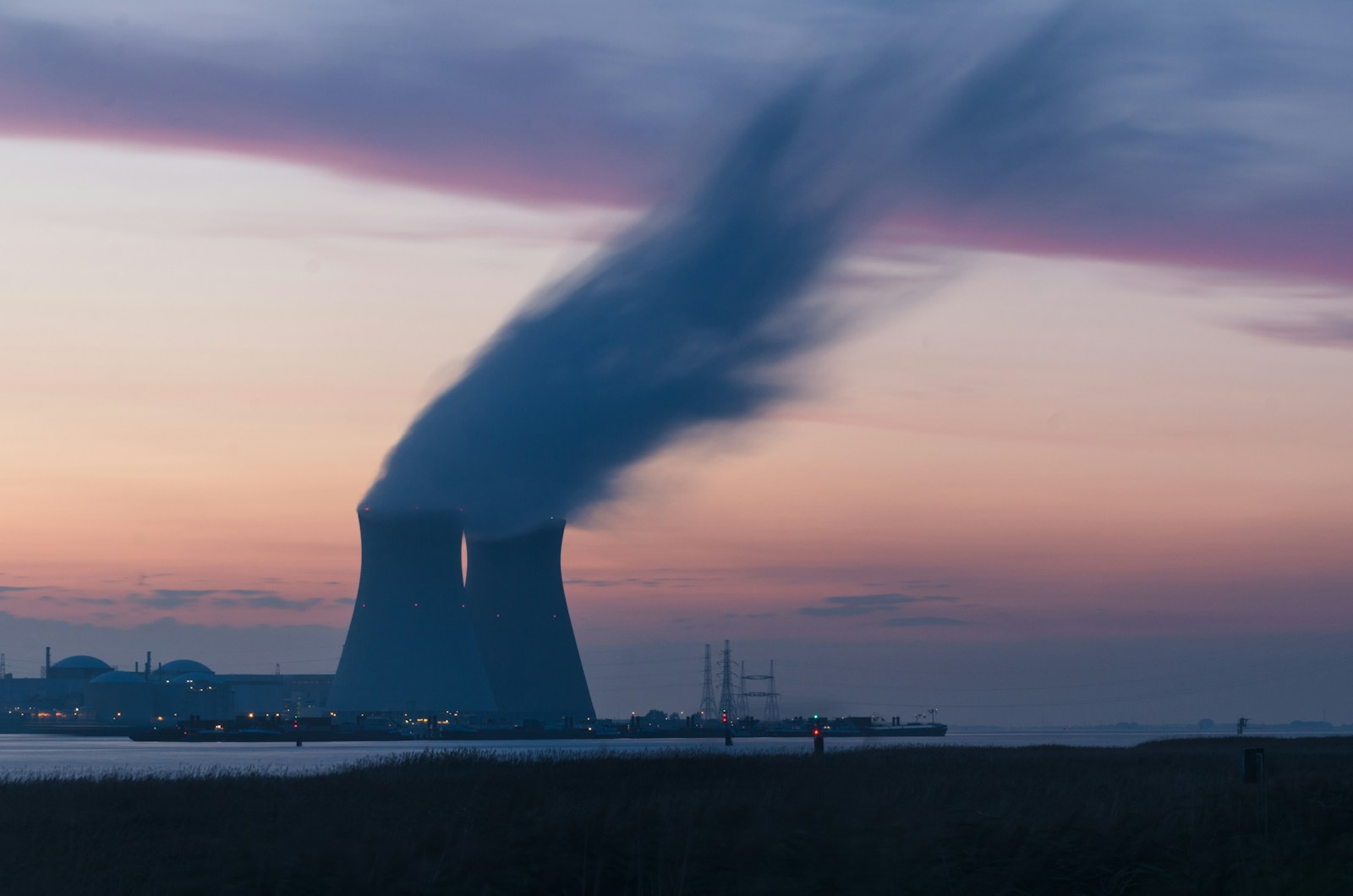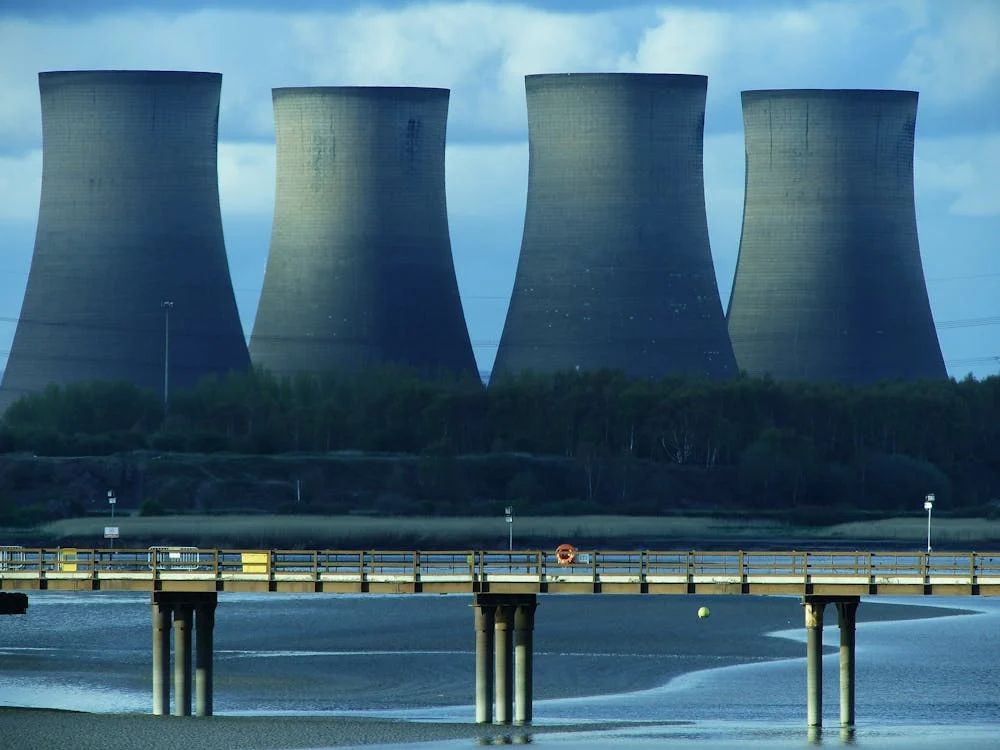Building a sun on Earth is no easy feat – that isn’t stopping nuclear energy startups, though. But are they ready to be in it for the long haul?
Nuclear Energy Industry: A Brief Overview
When nuclear energy was first used for mainstream electricity generation – as opposed to bombs – in the 1950s, it seemed like it was the energy of the future. Hundreds of reactors were built over the next few decades, with France and the US leading the way. But as with any young technology, certain technical problems soon raised their heads, increasing time and costs. Meanwhile, there was a rise in public concern over the safety of the technology – brought to a fever pitch after accidents at Three Mile Island and Chernobyl – which not only tightened regulations but also resulted in fewer reactors being commissioned. Over the years, the share of nuclear in the world’s electricity consumption dropped from 16-17% in the 1980s to 9-10% today.
While it’s still a somewhat controversial energy source, nuclear has a few things going for it in the modern world. Firstly, it’s a clean source of electricity as far as carbon emissions go; while the International Energy Agency sees renewables – like solar and wind energy – doing most of the heavy lifting in getting the world to net-zero carbon emissions by 2050, nuclear plays an important part, too. Secondly, the current energy crisis and countries’ desire for energy independence (highlighted in Europe after Russia invaded Ukraine) make nuclear an increasingly attractive choice. As a result, several countries – including the UK, France, India, and China – are committing to long-term nuclear strategies. And while France and the US account for nearly half of today’s nuclear capacity, 85% of ‘prospective capacity additions’ are outside the US and Europe (according to Reuters).
Most of these efforts will continue to consist of nuclear energy : splitting an atom in two to release energy. Fission, however, creates some radioactive waste and runs the risk of nuclear meltdowns if the reaction gets out of control. That doesn’t happen with fusion, where two atoms are – you guessed it – fused together. This process, seen in the hearts of stars, has a far greater energy potential than fission, but is also infamously hard to bring about; a net energy gain was only first achieved by scientists in late 2022. But a growing group of nuclear energy startups are willing to take on the challenge.


8 Notable Nuclear Energy Startups
Commonwealth Fusion Systems

- Location: US
- Founded: 2018
- Number of employees: 900+
- Amount raised (USD): $2 billion+ LinkedIn: https://www.linkedin.com/company/commonwealth-fusion-systems
Overview: Commonwealth is one of the kingpins of the nascent fusion energy scene. Its secret? Magnets. Like many other fusion efforts, Commonwealth uses a tokamak: a donut-shaped chamber in which gaseous fuel is freed from its electrons by an electric current, forming a plasma. This plasma is heated to scalding temperatures at which particles’ energy levels become higher than the electromagnetic force that keeps them from fusing. The magnetic field generated by the electric current running through the plasma controls it by twisting it. But magnets are also used to insulate the plasma; the better the magnets, the less energy is needed to maintain fusion temperatures.
Commonwealth claims to have developed magnets that allow for smaller and therefore cheaper fusion systems. The company is now developing SPARC, a demonstration project that will be the first ever ‘commercially-relevant net energy fusion system.’ Commonwealth plans to begin work on ARC, its fusion power plant, in 2025.
Helion Energy

- Location: US
- Founded: 2013
- Number of employees: 200+
- Amount raised (USD): $608 million
- LinkedIn: https://www.linkedin.com/company/helion-energy/
Overview: Helion’s been around for a while, but it was only in the last few years that it received a cash infusion to the tune of $500 million in one swoop. Now, it also has its sights set on building the world’s first fusion plant. Unlike Commonwealth, though, Helion’s reactor looks more like an hourglass on its side; at each end, deuterium and helium-3 fuel are heated up, then catapulted towards the center at over a million miles per hour, where they collide and fuse. The electricity is captured straight from the reactor, which Helion claims makes it easier to integrate into the grid. With several prototypes under its belt, Helion is now working on its 7th iteration (Polaris), and plans to begin providing fusion power to its first customer – Microsoft – in 2028.
Zap Energy

- Location: US
- Founded: 2017
- Number of employees: 144
- Amount raised (USD): $327 million
- LinkedIn: https://www.linkedin.com/company/zap-energy/
Overview: While Commonwealth and Helion’s systems rely on magnets, Zap’s tossing them out altogether. This nuclear energy startup uses a Z-pinch system for its technique, in which a magnetic field, created by an electric current, compresses the plasma. When this method was first developed, it didn’t contain the plasma for very long; Zap solves this problem by having different sections of the plasma stream moving at different speeds (a process called sheared-flow stabilization). The Z-pinch compression further energizes the already sizzling plasma, leading to fusion. Zap claims its system is smaller and more efficient than that of its competitors; a ten-foot wide plant, says the company, could power ‘a small city.’
Energy Singularity

- Location: China
- Founded: 2021
- Number of employees: unclear
- Amount raised (USD): $121 million
- LinkedIn: https://www.linkedin.com/company/energysingularity/
Overview: China is set to become one of the leaders in nuclear energy, and its nuclear energy startup Energy Singularity hopes to get ahead on the fusion front. Its method of choice is the good old tokamak, and at just three years old, it’s not only built one, but is already whirling plasma around inside it. Like Commonwealth, it’s focusing on developing better magnets to build smaller tokamaks; it trialed its first machine in June 2024, and plans to have its next design up and running within a few years. The company claims that this next-gen tokamak, the HH170, will produce ten times more energy than the heat needed for the plasma.
Tokamak Energy

- Location: UK
- Founded: 2009
- Number of employees: 250+
- Amount raised (USD): $261 million
- LinkedIn: https://www.linkedin.com/company/tokamak-energy-ltd/
Overview: Three guesses for the kind of fusion system Tokamak is developing. This nuclear energy startup only aims to integrate its fusion energy into the grid during the 2030s, it’s already well on its way; in 2022, its tokamak reached a temperature of 100 million degrees Celsius – the threshold for commercialization – which Tokamak claims makes it the first private company to have done so.
Marvel Fusion

- Location: Germany
- Founded: 2019
- Number of employees: 64
- Amount raised (USD): $200 million
- LinkedIn: https://www.linkedin.com/company/marvelfusion/
Overview: Marvel’s also going magnet-less. This startup’s approach relies on lasers, which happens to be the method used by US scientists at the National Ignition Facility (NIF) to achieve the first energy surplus for fusion in 2022. Marvel’s method works by firing multiple lasers at a granule of fuel. When the laser hits tiny rods inside the granule, it strips away the electrons; the remaining positively charged particles are accelerated and hit the fuel portions of the granule with such force that fusion ensues. In 2023, Marvel partnered with the US’s Colorado State University to build a $150 million facility (planned to complete in 2026) to further develop its technology.
Xcimer Energy

- Location: US
- Founded: 2022
- Number of employees: 50
- Amount raised (USD): $105 million
- LinkedIn: https://www.linkedin.com/company/xcimer-energy-corporation
Overview: Xcimer, too, is in the laser business. Like Marvel, it uses a fuel pellet – Xcimer’s is just a centimeter long – that it fries with a laser; compared to NIF, whose laser had two megajoules, Xcimer’s might be capable of up to five times that (as reported by BBC). When the laser hits, the fuel ignites and fuses. The resulting heat is carried away via a coolant and is transformed into steam to spin turbines and generate electricity. Xcimer recently raked in $100 million during its Series A round; its first prototype, Phoenix, is planned for 2026, and Xcimer aims to start supplying electricity to the grid during the 2030s.
Type One Energy

- Location: US
- Founded: 2019
- Number of employees: 38
- Amount raised (USD): $82.5 million
- LinkedIn: https://www.linkedin.com/company/type-one-energy
Overview: Type One’s chosen technology wins the prize for the most epic name: the stellarator. This method, dating back to 1951, is not unlike a tokamak in that it keeps the plasma confined to a donut-shaped structure with a magnetic field; unlike tokamaks, however, stellarators use only an external magnetic field to twist/control the plasma, which makes the process more stable. Stellarators – which, with all those twists and dips, look like drunk tokamaks – are incredibly difficult to build, but Type One is hoping to finalize the design for its first plant by 2030. In the meantime, it’ll be building its first stellarator, Infinity One.
Read also: Top 15 Green Tech Companies & Startups in 2025
The Future of Nuclear Energy Startups
As the old adage goes, fusion energy is always 30 years in the future. These nuclear energy startups’ plans look good and simple on paper, but there are still significant challenges that need to be solved. Right now, the general consensus from scientists is that large-scale fusion energy is unlikely to materialize anytime before 2050 – and even that’s optimistic. While investment into fusion is growing, that growth has been slowing in recent years; according to a report by the Fusion Industry Association, even a growth by $1 billion a year is not enough to make fusion commercially viable by the 2030s, a milestone envisioned by 89% of the 45 companies the report polled.
On the other hand, however, some of these nuclear energy startups are perfectly placed to tinker with the technology since they can innovate without a huge board of directors scrutinizing their every move. Many are closely tied to scientific institutions or universities, giving them access to better science and research; Zap, Tokamak, and Commonwealth all spun out from such institutions, for example. There’s more brainpower involved, too; more fusion companies appeared in the five years than in all the time before. Their cases are strengthened by advances in technology and computing power as well as a heightened need for sustainable, independent energy sources. So yes, fusion is still decades away – but for the first time, that estimate might not be a complete pie in the sky.








